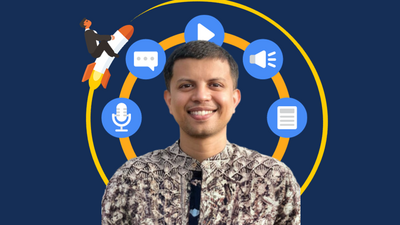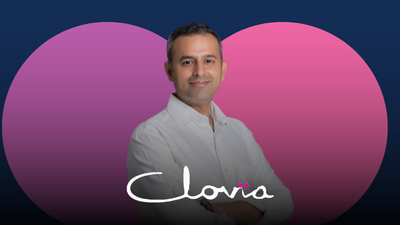Since we are at the peak of summer, we will take the example of a company that makes Chiller the juicer. Now the founder thought the most obvious route to growth is to populate search using SEO and run specific campaigns with different variations of the “keep yourself cool this summer” trope that is so ubiquitous in May-June.
But some surprising insights on Chiller’s use come up:
- The vegans have been using the juicer to make almond milk and hummus
- The gym fans have been making smoothies and protein shakes
- The party enthusiasts have been making exotic sorbets and sauces
The founder would have missed out on these cohorts because he positioned his brand too narrowly. What could have been done differently? Some answers will come up as you read on. (BTW, Chiller is a fictitious brand created to bring this marketing conflict alive).
How can a founder ensure obvious and not-so-obvious mistakes don’t waste their precious marketing bucks and choose wisely Here’s a non-prescriptive primer of things to keep in mind.
Write the best story ever told
What’s your story? Why are you doing this? Why should a consumer believe in your health tracker’s promise of finally making them move from the couch? When scaling beyond 0-to-1, you must have a brand narrative that guides your marketing. This isn’t a good-to-have that serves as a padding to your marketing initiatives; instead, the north star guides them. And no, a few meetings with a brand consultant won’t cut it.
“The reliance on others to build storylines is neither ideal nor scalable. I see too many marketers outsource the art of storytelling. I believe the most successful marketers in the world are the ones who can craft meaningful stories and embrace the consumer’s heart. You should be able to craft a narrative and build significant content interventions across business and commerce,” said Samriddh Dasgupta, CMO of Heads Up For Tails, a pet supplies startup.
Why are we stressing about getting your story right from the get-go? Your brand narrative is a non-replicable moat. Anyone can bring a new product line similar to yours or a different one that elbows you out of the scene. But if you have a solid story that connects with consumers, it will be difficult for others to write you off. For instance, you might have another health tracker with a billion additional features fighting for your market, but if you have a clear brand narrative and story that conveys why your tracker can get people to their goals faster, you’re golden.
But make sure you are authentic. People see through ingenuity. “This is what I have seen with Bombay Shaving Club and Heads Up For Tails - communicating the brand's purpose and value system is critical when you are commanding a premium in the market. You must first establish the ‘why’ of the brand before you go into commerce. Once that’s done, capturing heart and mind space is a lot easier,” Samriddh added.
Behaviour switch from 0-1 to 1-N
In the early stages, startups typically do multiple things as they figure out what will work for them. It’s hard not to onboard that popular influencer who makes baby videos because there’s a precise match between your recyclable toy brand and that influencer. But you also want to do some large outdoor ads and a few community events and put in place targeted SEO, spreading your budget across 8-10 channels.
Now you’ve effectively spent INR50 lakhs on each experiment, which doesn't give you any clear signals because you initially did not have any clear hypothesis.
Instead of this ‘let me throw spaghetti at the wall to check what sticks,’ at the 0-to-1 stage, growth comes from mastering a few marketing channels. Imagine scaling up every channel together when you cross Series A/B; you’re also amplifying the hundred problems that come with each of them! This is the wrong stage to have so many open; you’re only going to slow down your system.
But your rise will be extremely visible to the public after you move beyond the 0-1 stage. This also means you use your marketing toolkit differently and introduce more channels.
Unfortunately, this is also when the early-stage muscle memory kicks in, and you feel the urge to press the pedal on your best ROI channels to get your goals faster. Here, make sure you avoid over-dependence on one channel. This can often be a tough addiction to break because you expect it to perform the same way as it did in the early stages, and there’s comfort in predictability.
“... you can call it [performance marketing], can be seen as a drug, I suppose, when you are entirely reliant on it to fuel the revenue of your business…. I would not take all of your life savings and dump it into a single stock, I don't recommend putting all of your money into a single performance marketing channel, and then somewhat exposing you to the volatility of fluctuating CPCs or changing market conditions. I would agree with you that it is a drug, in a sense, if you have all of your eggs in one basket, and that basket takes you on a very intense rollercoaster in terms of performance"
While scaling, true magic happens when you use all the essential marketing channels together and follow a healthy mix. For example, Google will give you instant results. Instagram or Reach and Frequency campaigns will slowly start giving you results. But you need to have those in your mix (more on this below).
How to get the most out of your marketing function
- Get influenced
Make digital ads out of your influencer videos. Enough reels have been made of, say, top travel tools to use while planning your next trip. You aren’t doing yourself any good by outsmarting them and making a few more. Recycle them as your brand videos. Influencers these days have tremendous camera and writing skills, and often the quality is that of a production house. It is also much more influential than a brand page talking about its product.
- Double down on Recency and Frequency (R&F) Campaigns
A person needs to hear about your brand multiple times before it makes a mark. With an R&F Campaign, you can work on an audience of say, 20 million users, who will see your campaign three to five times throughout say, three months. The campaign does not optimise for clicks or conversions. So you won't see any immediate sales bump or more website traffic. But more people know about your service now. More importantly, it will increase your potential revenue base. Here, direct attribution will be hard, and you shouldn’t bother trying as well. But overall, your revenue base will start expanding, and in general, your conversion rate will increase in conversion-led campaigns.
- Don’t ignore sales the OG way
Online conversions are at most 1%. CRM conversions (like email notifications) are between 3-5%. But when you reach out to customers through your calling service, conversions are as high as 20%. So services that are slightly harder to crack or where it is a high-value purchase, consider employing a small calling team of one or two people, train them, and see what traction they can bring in terms of conversions.
- Tighten the strings on remarketing
Often, marketing teams overspend on remarketing, where even organic natural conversions are converted into paid conversions. To avoid this, start remarketing campaigns after three-to-seven days of somebody visiting your brand page so that you’ve given your audience enough time for natural conversion. Remember - remarket to them only when they don’t convert.
- Create special events to drive acquisition
Nitin Agarwal, co-founder of Upscalio, thinks getting inspired from offline sales is a great way to find marketing ideas to drive acquisition.
“In India, you’ll often find these weekly bazaars, such as a Shani or Mangal bazaar, where you find knick-knacks at very attractive pricing. We replicated that on Sunday at the flea market on Shopclues (Sunday because it was our lowest traffic day). It worked very well both in terms of acquisition and repeat. So do think of merchandising or propriety ideas. It could be a product, a free session, webinars, etc. Anything which can aggregate people,” Nitin said.
He mentions another example - deals where they sold a common consumable, such as a deodorant or a pack of batteries, and sold it at a 60-70% discount. It became popular with the college-going crowd, who would then go on to buy other things from the marketplace. They’d keep the number of units limited so that they have some visibility on the burn but saw a very high repeat rate in this cohort of acquired users.
Thinking through your content
By this time, you should also have some content pillars. What’s working for you? How much time should you dedicate to a certain kind of content? What is the ideal volume of content? It cannot be that your entire team doubles down on creating “I am Barbie” memes because the internet would not stop talking about it as it would eventually lead to suboptimal brand messaging. There’s a thin line between cringe and creativity.
Let’s understand this with the example of a travel tech company. Here’s a broad framework.
- Pick up a broad base for your category and do some exciting content around that, instead of limiting yourself to a product. So roughly 30% of your content will be about travel, be it five unexplored places in Goa or best practices to follow in Vietnam. (Here’s one way Chiller could have broadened its user base)
Trivia: Often, this is what we use to describe the editorial function at a venture capital firm. We’re not here to just talk about our portfolio. A small part of what we do is creating a knowledge repository for each sector we operate in.
- Another 30% should be user-generated content where you can plug in your product. On choosing which influencers to work with, we often want to work with the biggest ones, but unless your product and service have also scaled significantly, prominent influencers will likely not give you high ROI. So, even in mid-stages, nano and micro-influencers are better. Make sure you go with sector-focused influencers with good engagement. If they start doing too many endorsements, their base is often diluted and won’t give your business the impact you want.
- 20% should be content that entertains. People will come to your page because they want to check out your product. But be careful with humor; don’t become a meme page that overpowers your brand.
- 10% should be direct communication. These are straight-up product posts: some highlighting the USP, ongoing discounts, etc.
- The remaining 10% is for anything topical that happens. Word of caution: staying away from being overtly political will save you a lot of headaches.
“As a founder, it's your job to tell your marketing team or social media team to follow this while also optimizing engagement. Another big goal is follower growth. Because unless your channel grows core followers, your reach isn't higher. And you're living in an echo chamber of a small base,” said Nitin.
What to measure?
The usual suspects, such as CAC and the repeat rate, will still feature when measuring the output. But founders often make the mistake of focusing on returns of individual channels instead of considering returns on total spending, missing the forest for the trees.
Let’s take an example. Google only gives you customers who are already interested in buying your category. But you also want to create interest for your product in newer user cohorts. You want people to become brand endorsers of your product and service. And therefore, what you should look at is TACOS (total advertising costs of sales) instead of comparing the ROAS (return on ad spend) of one channel to another. TACOS also gives you a good view of P&L. So, for example, for scale businesses like HUL, or other very large consumer businesses, TACOS is less than 15%, but TACOS is often at 50 to 100% for growth businesses.
There’s one metric that often gets discussed with investors when you raise a round: what is your LTV/CAC? A ground rule is that it should be more than 3. So if a customer buys four times from me and my acquisition cost for that customer is 300, and my average ASP of the product is also 300, then 1200/300 is 4. So my LTV to CAC is 4, a great place to be. You’ll reach there slowly as your base and consequently repeats build up.
Building your team
1. People who understand the business
Marketers need to understand the business they are in. “Most marketers lack that acute understanding of the business from a logistics, operational perspective, unit economics, and bottom line revenue contribution perspective. They have a clear understanding of media spends, but they potentially don't have that understanding of business,” said Samriddh.
Getting such people ensures they take initiatives that drive sales. For example, often, you’d make the mistake of taking consumers to home pages. But if I am looking for a specific type of snack, and I am redirected to the homepage where I have to look for a hundred other snacks, I will likely drop off.
2. People who understand tech
Another common requirement that sector experts valued while hiring a marketing exec was the ability to work with the tech stack. You can't be selling to and through platforms and to newer audiences if you are not entirely on top of the technology stack needed to do that.
“To build a truly unified, data-driven organisation, we need to deploy scalable technology stacks on top of almost all processes. It is a company culture of embracing human-centric technology. Sometimes it is easier to have plug-and-play stacks, but there is always an advantage to custom-build where possible. You get a lot more control. Suppose you have a website and know that many people are coming in to ask questions - would a chatbot help resolve L1 queries faster? Should you create a content management system in-house or do you want to rely on a third-party CMS? How are you storing your data? Are you doing it through a cloud-based system or on a physical server? Important to have a future gaze when making these decisions,” added Samriddh.
3. Agencies/freelancers to outsource work
First, get a performance marketing agency on board because it's a struggle to hire a strong in-house team, and it takes time to build internal expertise. So working with a marketing agency takes away that stress. You do pay a commission of 3-4%, but it comes with better ROI, meaning you spend less and burn less on marketing. And choose a mid-sized agency if possible; they’ll treat your account with respect and love.
The Maker-Checker model works well here; they can make and run the campaign while your team’s job is limited to oversight and optimization.
You can work with freelancers for everything else: your CRM stack, retention, drip marketing, etc. Even for SEO, you can work with a freelancer on result-driven commercials.
An excellent framework to follow is the one by Nitin below, where he tells you the functions that can be outsourced and what you should focus your efforts on in-house.
Closing thoughts
India's complex consumer markets don't allow you to have one playbook. And it’s not just the market complexity but also the founder and available talent pool.
“Where you operate from in India, ends up impacting how you build, scale and operate. India’s diversity is not just in her dynamism of consumers but strongly reflected in the talent pool that is available to organisations. We are a complex country, with vast variations in culture, weather, space, pace, living quality and civic facilities. Much of any organisational playbook is ideally built considering geographic specificity. Your business structure will be dictated by the region you operate in. Marketers need to embrace that nuance and build content, culture and community accordingly.” said Samriddh.
To reiterate, all guidelines are just that, a “guide” that indicates which directions are likely to get you to your goal faster, but almost all frameworks are only suggestive in nature, and you should be testing their limits at all times. Only in marketing can experiments fail successfully (this should be on a t-shirt).
This article consists of information gleaned from internal sessions conducted by Blume. The graphics are recreated versions of the deck from Nitin Agarwal’s session.









